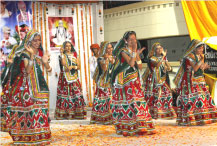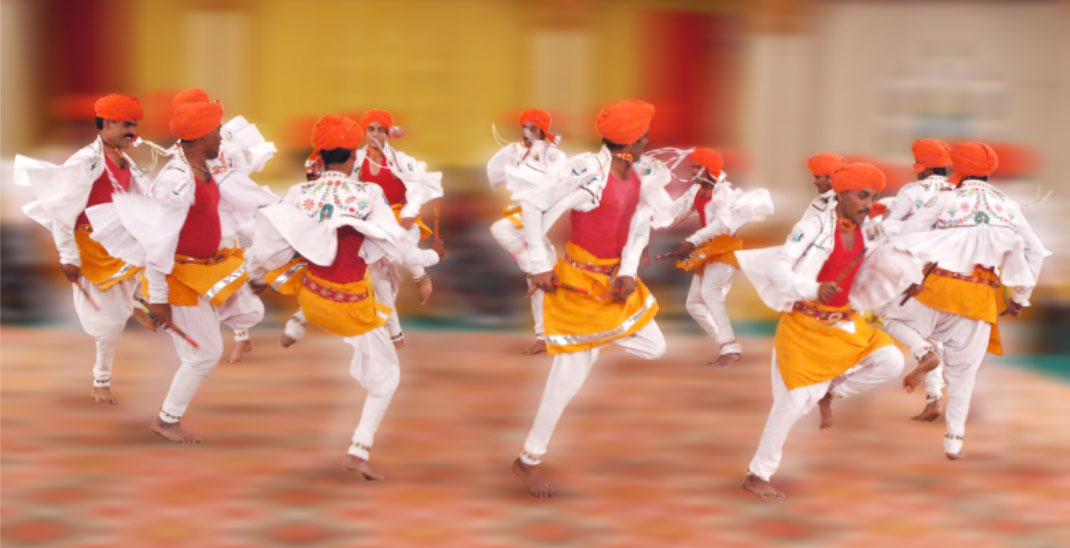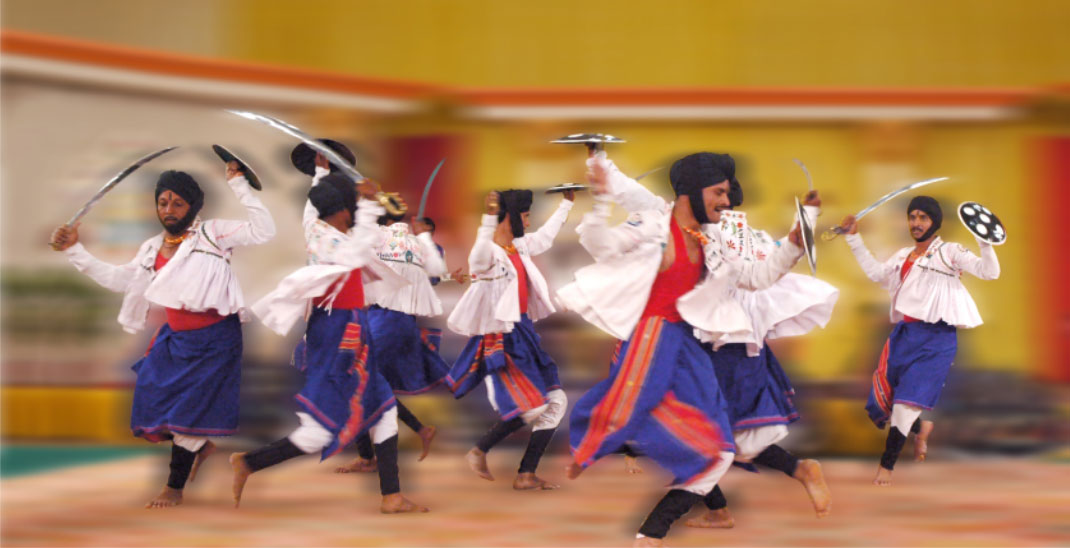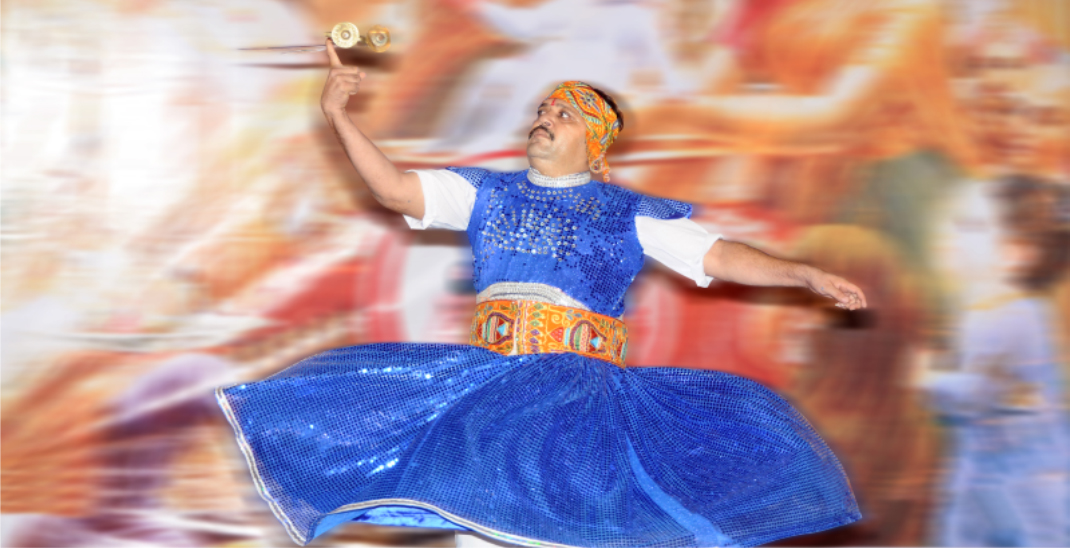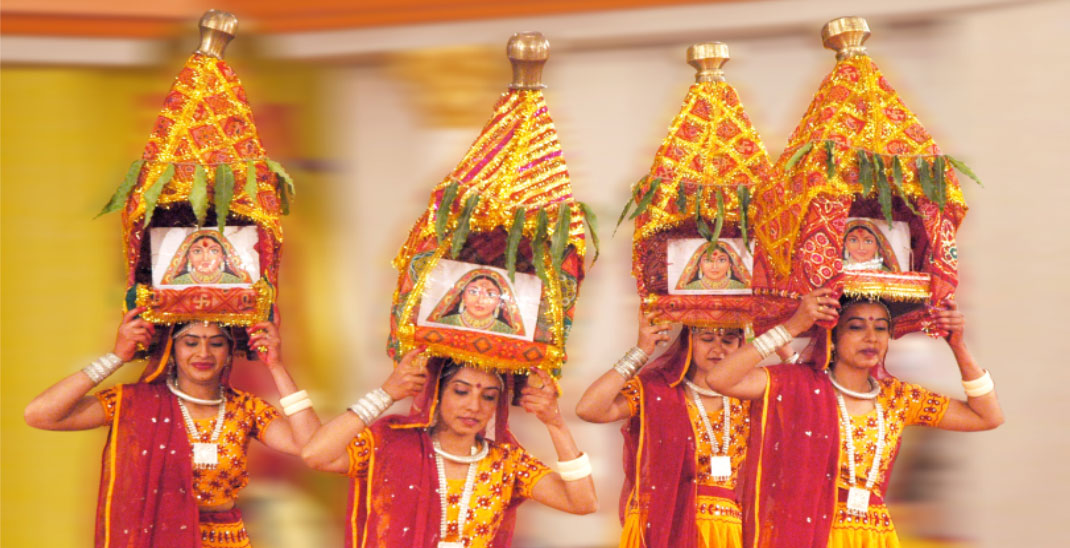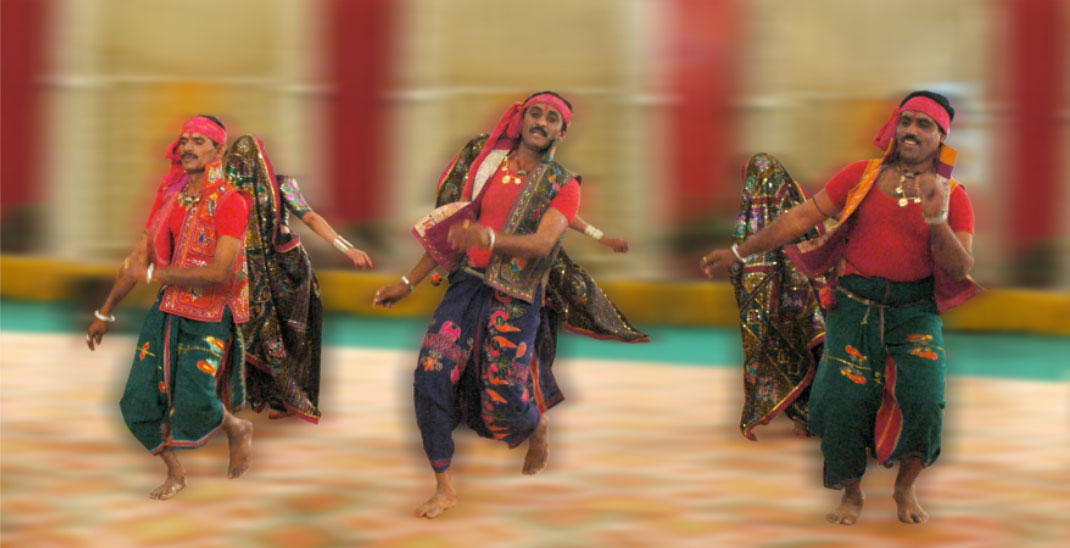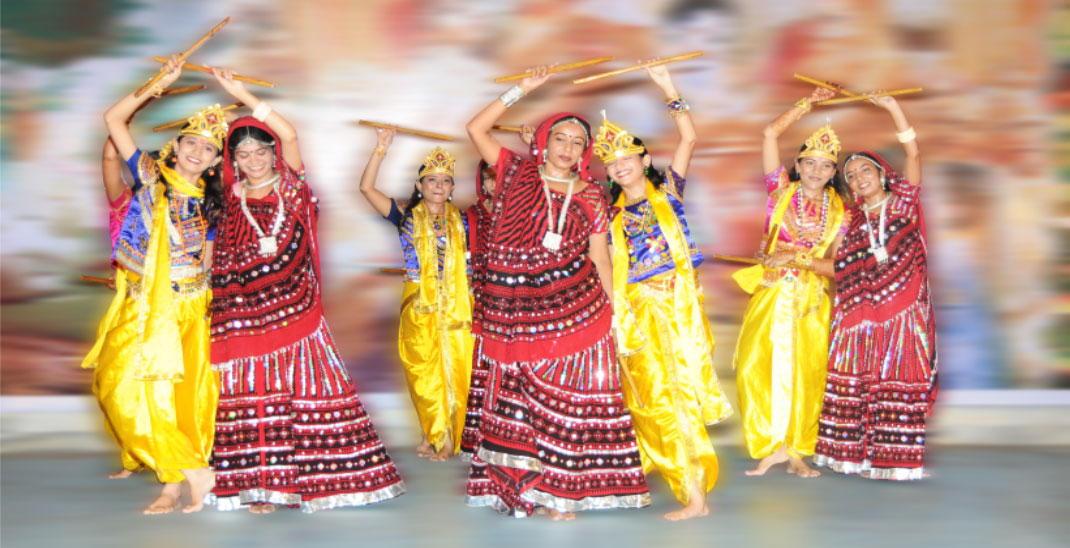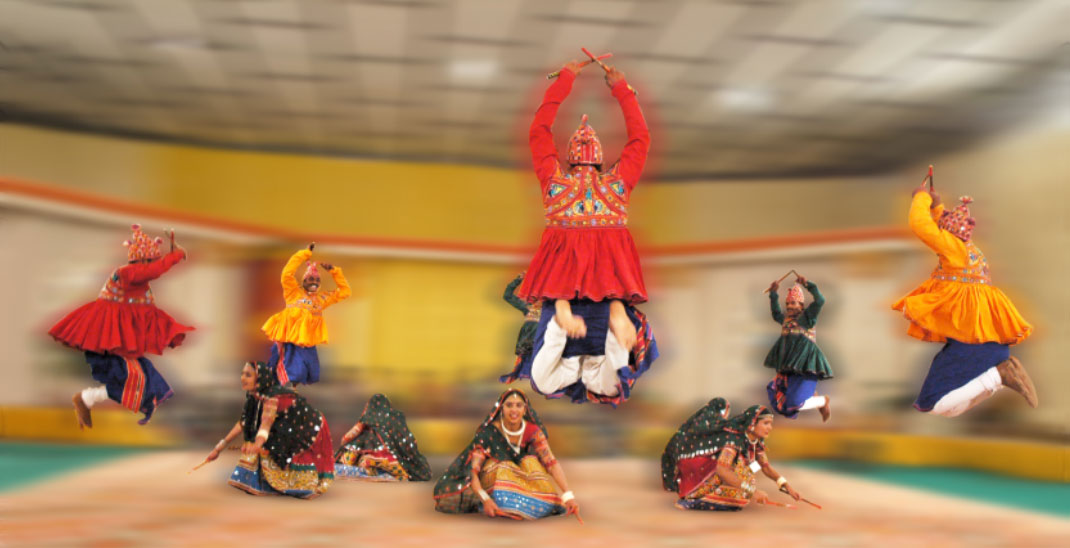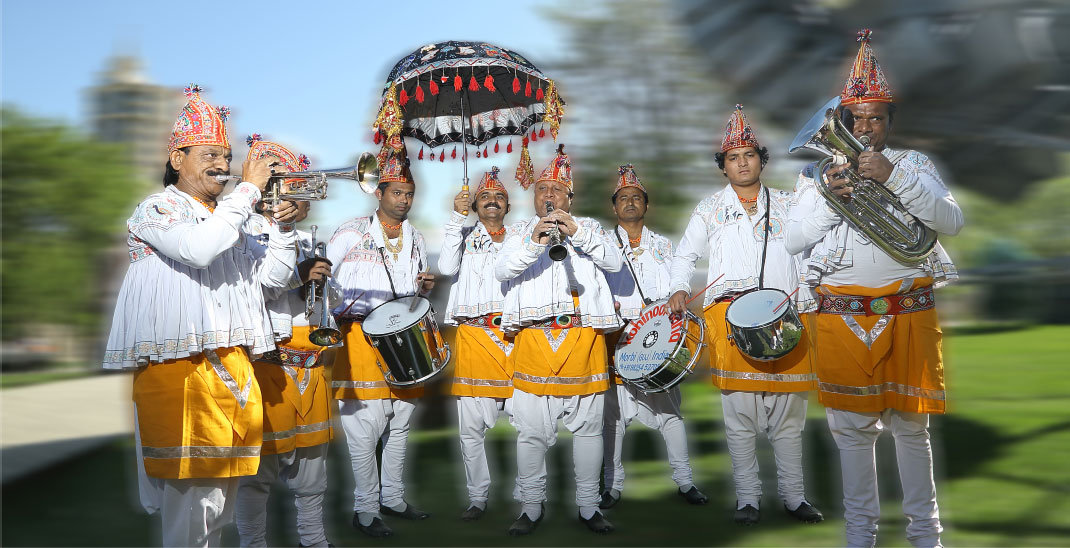DANCE FORMS
EXPLORING THE HIDDEN LANGUAGE OF THE SOUL
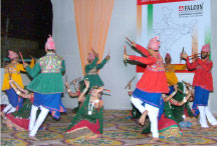
Dandiya Raas
SPRM has specialized in this particularly popular dance form of Gujarat, the Dandiya Raas. Rass essentially belongs to Saurashtra and Kutch regions which is performed all over Gujarat. The tradition of Raas is as old as Puranic period. In various parts of the country, Raas is danced in different manners. The number of dancers go from 8,16,32 up to 64 couples, who sing a song together which is also called Raas.There are three varieties of Raas :
Dand Rasaka : The Raas in which dands or sticks are used.
Mandal or Tal (Rhythm) Rasaka : The Raas dance in which clapping is used.
Lata Rasaka : The Raas dance in which the performers cling onto one another, like a creeper to a tree.
The Dandiya variety of the Raas Nritya of Gujarat is generally performed by a group of youthful people, both males and females, who move in circles to measured steps, beating time with small sticks, called Dandiya singing to the accompaniment of Dhol, Cymbals, Zanz, flute or Shehnai. Nowadays Dandiya Raas is the most popular dance form performed during the Navratri. Farmers are used to perform this dance on the occasion of their harvest. This dance is performed either by men only or by men and women together. Dandiya Raas, Kanbi Raas, Mishra Raas etc. are different forms of Raas Nritya. Some of the other varieties of Raas dance are :
Hallisak Raas, Kanbi Raas, Gof Raas, Maniaro Raas, Mishra Raas
Hallisak Raas : The origin of Hallisak dance is traced to the Harivamsh Puran. It is a form of a group dance, which is performed by both males and females. A man dressed as Lord Krishna stands in the middle of the circular arrangement, whereas the other female dancers stand in the form of a circle, pose as the Gopis. The Tala of the performance is kept by the clapping of the hands and singing.
Raas or Dandiya Raas is an extremely popular traditional folk dance form of Gujarat- India, that needs no introduction. It was originated in Vrindavan by Lord Krishna and his brother Balram. Balram used to perform this dance form by way of holding his plough in his hands. It is also performed depicting scenes of Holi and Leela (playful dance) of Lord Krishna with her beloved Radha and her friends Gopis. This dance form spreads the message of love and affection with each other. The dancers are used to perform Dandiya Raas by holding two Dandiya (Wooden Sticks) into their hands with live music. It is the featured dance of Navratri evenings in India, particularly in Gujarat. During Navratri festival in all over Gujarat and Mumbai, people gather and perform Raas. The word 'Raas' comes from the Sanskrit word 'Rasa'.
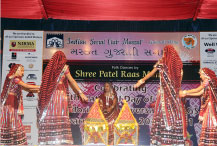
Garbo
SPRM performs this dance in its all forms with dedication in festivals as well as wherever it gets the opportunity. Garbo is a popular folk dance and an identity of Gujarat. Usha, the grand daughter-in-law of Lord Krishna gets the credit for popularizing the Lasya Nritya, which came to be known as Garbo, performed by women on Navratri nights, Sharad Purnima, Vasant Panchami, Holi and such other festive occasions. The word Garbo is derived from the Garbha Deep meaning a lamp inside a perforated earthen pot, symbolizes the embryonic life. Young girls and ladies, wearing beautiful and colourful costumes, place the pot with the lamp on their heads move to the accompaniment of folk instruments. Garbo is now a regular feature during the Navratri Puja (nine nights in honour and worship of the Goddess). Garba songs are mostly in praise of Mother Goddess Amba or Jagdamba, describing her form, powers and invoking her blessings, performed before Aarti of Goddess. While dancing girls pray to God to find a good life partner, there are also Garbas describing seasons and social themes of domestic ends and married life. Musical accompaniments to the Garbo are Damru, Tabla, Nagara, pot drum, percussion, Ektaro, Ravan Hattho, Jantar, Pavo, Shehnai, Murli,Turi and Taturi.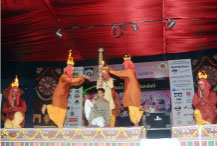
Garbi
SPRM has acknowledged this variation of this popular dance form performed by men only, with its innate styles. Garbi is the dance of devotion to holy mother Jagdamba. People are confused between the two words Garbo and Garbi. In which the Garbo means the dance which is performed only by the women to pray to goddess Jagdamba. Whereas Garbi is the dance performed only by men for devotion to the goddess Jagdamba. Men are not allowed to dance in Garba, same way women are not allowed to dance in Garbi. Clad with Pitambar, yellow dress or Mukata men also keep symbols like Dhwaja, Trishul etc. with them. Further, the beating of the sticks is replaced by clapping of the hands. A great concentration is required to keep balance while dancing in a Garbi.And as a sign of intense penance, keeping the Garba on an enflamed Indhoni, the stand, on their heads and do this dance with various body exercises. Kept only on a wet cloth over the head every layer of the cloth categorically catches fire simultaneously along with the Indhoni. Sometimes when more time is taken in the dance, instances of the hairs of artist getting burnt also have occurred. When the dance is performed in an open air, with a slightest of a wind, the flames of the burning Indhoni also burn eye hairs and eyelids sometimes. Yet eager to show their devotion towards the goddess Jagdamba, the youth is ever-ready to take the risks whatsoever. In a famous song of the Garbi dance the young dancing devotees sing : 'Aey roode garbe rame chhe devi Ambika re.. Eni tali pade chhe trilokma re.. Aey roode garbe rame chhe devi Ambika re..!'
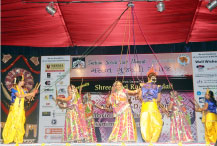
Gof - Gunfan
SPRM has mastered this difficult style of Raas, wherein the performers holding coloured strings attached to a top, move in circles weaving and unweaving different patterns. The word 'Gof' has originated from the word 'Gunfan' which means 'tie' (knitting). In this dance form, performers are used to hold ropes of different colours from one end and the other ends are tied together on the top. While dancing the performers tie the different ropes together and by the time of completion of first part, a number of colourful ropes are tied up together. In the second part the performers open the coloured ropes back to their original position. While dancing tremendous concentration of the dancers is required in this dance form, any lapse on the part of any dancers, it becomes difficult to open the ropes tied once.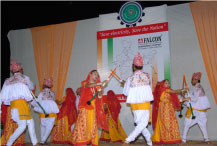
Tippani
SPRM comes from the rural background where the dance form of Tippani is associated with the hard working people of the village life. In the Tippani folk dance women labourers engaged in construction work, strike the floor with long sticks called Tippani. They have a rhythmic musical process to escape the tedium of the toil involved in their arduous task. The word 'Tippani' means the form of strengthening the floor or roof by continuous stroking on it with some object. In the ancient times, when cement was not discovered the floors and roofs were made with mixture of lime, jaggery, benzoin, fenugreek etc. and then stroked. People started doing it with dance, music and singing, and thus the dance form of Tippani invented. The costumes are short coats known as Kedia and tight trousers or Chudidars. The accompanying musical instruments are Nagara, Damru, Tabla, Pavo, Shehnai, Ravan Hattho and Jantar.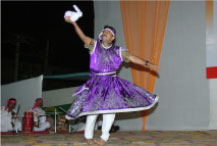
Bhawai
SPRM performs this interesting dance form of drama and balance with style and splendor. Bhawai is a famous dance drama form for staging historical, religious and social plays. These plays are staged during the night. In these dance dramas all characters are played by male artists. Even the female character is played by male artists. In between the scenes, the Bhawai Dance (Nritya) is performed. In this dance form, the dancer keeps balance with 4-5 swords without holding them into his hands. The dancer makes different birds/animals with a piece of cloth and makes the dance attractive.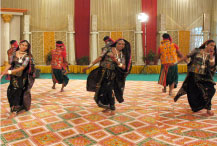
Hudo
SPRM does this dynamic dance with fervor and vigor. Hudo is the dance of Bharwads (the shepherd community). The idea of dance originated from sheep fights. The movements of two sheeps ramming their heads is duplicated in the dance in which the dancers clap hands in a forceful and rhythmic manner. More than dance it is considered as a folk game which is played at Tarnetar and other fairs. The young men and women try to match their guts and strength with each other. While playing Hudo they sing songs of love. 'Hudo' belongs to Jhalawad district of Gujarat. Every year the world famous colourful festival is organized there. The young boys and girls of the area dance together by clapping with each other. While dancing, they choose life partners for themselves. Parents and society accept this procedure of selecting life partners. In the 'Hudo' dance performance the craziness of a girl is depicted before meeting her life partner.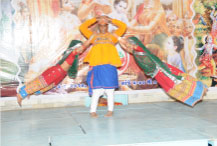
Baneti
This is an entertaining dance form performed with enthusiasm by the SPRM dancers. Basically this is a kind of brisk exercise or acrobatics to the tunes of drum beats and music. The performers move quickly in round while holding couple of lads at their waists or girls at their shoulders. It's a kind of balancing act while moving fast.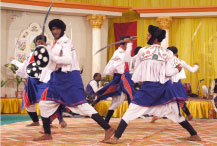
Dhhal-Talwar
There is a history of martyrdom behind this dance of valor and SPRM is proud to begin this dance form at the very place where the history was created itself and SPRM has been appreciated to relive the glorious memories. About 450 years ago Muzaffarshah the Third, the Suba (provincial governor) of Ahmedabad state did not accept to pay the statutory tribute to the Mughal Emperor Akbar. Consequently the army of Akbar attacked Ahmedabad. Scared by the invasion, Muzaffarshah in quest of refuge came to Jam Saheb Sataji, the king of Jamnagar.In those days, his highness Jam Saheb earned a good fame for protecting his refugees at the risk of even his life. As Muzaffarshah got refuge at Jamnagar, Akbar's army moved towards Jamnagar for a battle. At that time simultaneously the marriage of Jam Sataji's elderly son and crownly prince Ajaji was also going on. With a view to keep the occasion undisturbed Jam Saheb's army came face to face with Akbar's army. In the historical battleground of Bhucharmori near Dhrol, both the sides fought a fierce battle. On getting the news of the war, Prince Ajaji, to perform his duty as a true warrior, jumped into the war with the sacred fruit of Mindhal bound on his wrist symbolic of his marriage ceremony and became a martyr. Yuvrani, his bride, became Sati after him means died after his brave and beloved husband although their army became victorious in the war.
Since then, in this battlefield of Bhucharmori, every year Rajputs from all over Gujarat gather to pay homage to the martyrs and every year in the memory of the martyrs a three day fair is organized. In this fair, competition of all the Raas Mandalis- the dance groups, takes place. 75 years ago, to the enthusiastic young dancers of the Raas in the fair, Jam Saheb told them that it is the event of the historical heroism tale. In accordance with the ocassion, if a dance of valor is performed it would be a matter of pride and pleasure for all. Accepting this challenge, the young men of Latipur, Dosabhai Natada, Ranabhai Chavada etc. practiced for whole of the year and next year presented the bravery dance of Dhaal-Talwar (Shield-Sword) in the fair. Extremely pleased by this dynamic dance, His Highness Shri Jam Saheb gifted his golden handled sword to an enthusiastic young performer of Shree Patel Raas Mandali, Ranabhai Chavada. Thus, this dance began in Latipur.
